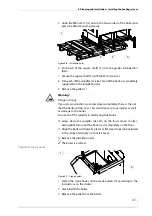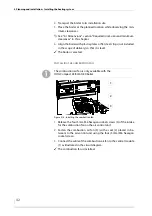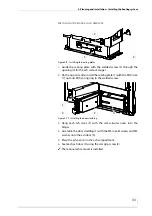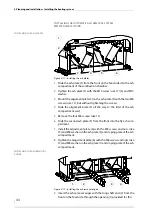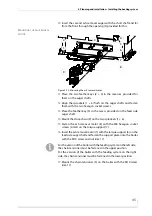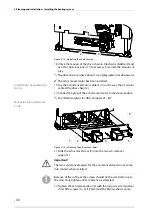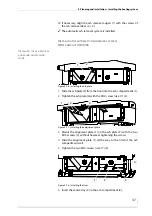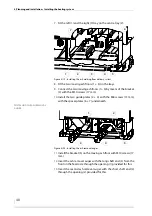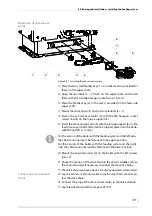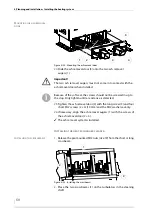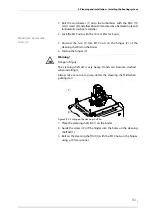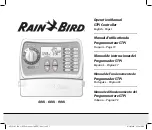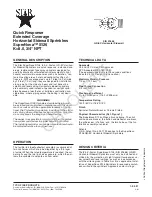
4 Planning and installation – Connections
36
The following should also be considered:
•
The connecting piece may not protrude into the chimney.
•
If the system flue gas pipe has a larger diameter than the chimney,
the connecting piece must reduce its diameter to that of the con-
nection. In this case, the cone of the connecting piece should
taper as narrowly as possible.
•
Use bends rather than elbows; the radius of the elbow may not be
less than the diameter of the pipe.
•
The chimney should be vertical and straight, if possible without
deformations (take particular care in older buildings).
•
All of the cleaning doors and measurement hatches on the
chimney must have tight seals.
•
To reduce the entry of additional cold air, only one heat source
should be attached to each chimney.
•
To prevent dust from escaping, the flue gas pipe must be sealed
with heat-resistant silicone.
E
LECTRICAL
SYSTEM
The directives of 2006/95/EC (low voltage guidelines) must be fol-
lowed for the electrical connections to the system.
No electrical installations, such as power sockets, distribution boxes,
lights or light switches may be located in the fuel storage. Any lights
must be suitable for use in areas at risk of explosion. The VDE regula-
tions for rooms with a risk of dust explosion must be followed.
✎
The required connection values are described in chapter “3 Mode
of operation”, section “3.3 Technical data”.
L
IGHTNING
/
SURGE
PROTECTION
W
ATER
The coatings formed by stones in the heat generator can have a det-
rimental effect on the efficiency (energy efficiency) of the heating/
boiler system and can lead to damage and faults.
Important!
To operate the heating system safely and properly we recommend
protecting the electronic components with a lightning and surge
protection according to DIN EN 62305 or DIN VDE 0100-443. Please
contact your specialist electrical service.
Important!
The heating system must be filled with water in accordance with
VDI guideline 2035, “Avoiding damage in hot water heating sys-
tems”.




















